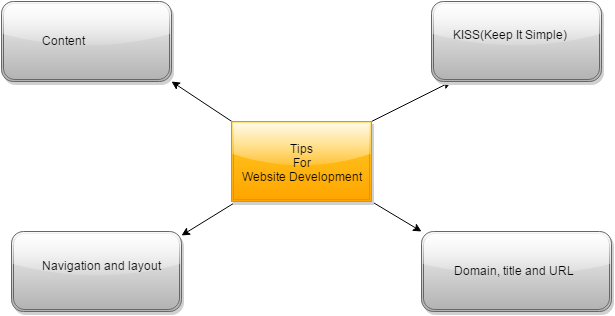How to identify links that harm your website ranking?
As the result of Google’s update against over-optimized websites, the SEO community had to make several amendments in their processes and functioning. It was the time when thousands of the blogs were trashed away from Google’s index and it was regarded as the remarkable action of this Search Engine giant against the improper blog network.
Must Read:
Free Website optimization quick guide
The removed blogs were low-quality pieces of content having seriously low authority, but many others had to undergo through it because of an abnormally huge number of backlinks to them. This Action of Google was an official message against the practice of over optimization. No doubt, the SEO professionals, and the webmasters have no choice other than cleaning the mess of artificial links from their websites.
Recommended Tool: Free Backlink Checker SEMrush
But, the process is much more difficult than it seems. Even after an input of a great amount of time and hard work, it is not possible to completely get rid of these unnatural or the artificial backlinks. The overall situation indicates the reformation and redesign of the link building strategy for the businesses. In the other words, it is the rise of need and practice of backlink risk assessment.
A backlink risk assessment is a link auditing process where lower quality backlinks are identified and removed from the website. While the bigger websites with numerous backlinks, it is quite impossible to check the links manually and get their quality status, the experts have suggested the following process check the low-quality links:
Process to check the low-quality backlinks
- The webmaster should use various backlink data sources to identify the linking root domains as much as possible.
- All the linking root domains should be checked with the help of Tool Bar Page Rank. Also, the TBPR distribution should be keenly observed.
- Find out the percentage of the deindexed linking root domains.
- Though it is optional but consider about checking social metrics distribution.
- Repeat the above steps on a regular interval.
When you go with the above steps of backlink checking, you have to analyze the results on the basis of the given points:
- What is the spike of the TBRP distribution? Is it going towards low end?
- Is the number of de-indeed linking root domains is increasing or decreasing?
- What is the status of the social metrics related numbers?
Some forewarnings for the webmasters
Every good thing comes with some limitations and minor risks along with them. You cannot expect the 10% accuracy in the results, the time period and the changing trends of the market also can influence the results. But still, the process is very helpful in checking the backlinks and assessing their quality status.
The main limitations or the shortcomings are described below:
1. It is not easy to get the depth of data as the Google has
Though there are many online tools available to check the backlinks, they are not as up to date or intelligent as the Google is. Here you can filter all the known linking root domains and carry on with only those who are still linking to your website. For this purpose, there are some proprietary tools are available that offer the commercial backlink check services.
2. TBPR tends to change infrequently
The Tool Bar Page Rank often tends to change 4 to 5 times in a year and the changes mostly present the linking root domains through the last update. It is a very considerable factor while analyzing the results and coming up with a decision.
Tools required for backlink risk assessment
While your website is loaded with a large umber of backlinks and a big data set, it is advised to use NetPeak and Excel as they are better performers than any other SEO tool. There are various URL checks (such as PageRank, Majestic SEO data, server responses, domain PageRank) for which NetPeak is one in itself a great information provider application. And all the results can be sent and processed at Excel.
The process of Backlink risk assessment
-
Identifying the linking root domains
It is the fundamental process and you have to focus on collecting them in a possible big amount. It is also a smart decision to use many tools such as Web Master too, Majestic SEO, Open Site Explorer. It will provide you more than enough data and also avail you a good number of backlinks for the future. When you have the massive amount of backlinks in your hands, you have to remove the backlinks coming from the same linking root domain along with the not found domains (404). At the end, you will have a fine list of unique linking root domains.
-
Analyze the PageRank distribution
Now, when you have a significant amount of identified, unique linking root domains, the next step will lead to scrapping the Tool BarPageRank for each of them. The step applies to only those domains which are linked to the website. The complication level also matters here; if it is not too much complicated it should not be discarded. If you sense a spike of the distribution towards the lower end value, this situation indicates the rather negative situation.
-
Find out the de-indexed root domains
It is also very essential to find out the percentage of the percentage of the linking root domains which are not indexed or deindexed recently. If there are any deindexed linking root domains with a good and positive TBPR value; surely there are most recently deindexed by Google.
Remedial Actions and Processes
As the results of Google’s deindexing policy, many websites have experienced the drops in their rankings. The small sized website with lower PageRank value and low social share should be reviewed manually so that their quality may be assessed. Also, the existing link building strategy should be re-framed.
Actually, the websites with good authoritative values and audience’s trust can be liked without causing any special issue. So the websites of big corporate houses and established brands put a less like impact as they are highly trusted domains. In this way, the higher amount of risk or threat come from the websites with low authority/trust. If the link is coming from a website having a high number ofsitewidee links or unnatural anchor text distribution, they contain a high-risk factor.
Must Read:
How to improve link building strategy for your website
But the best remedy is the precaution. You should work on reducing the amount of unnatural side-wide links and use the tools to regularly check the quality status of the backlinks to your website.







